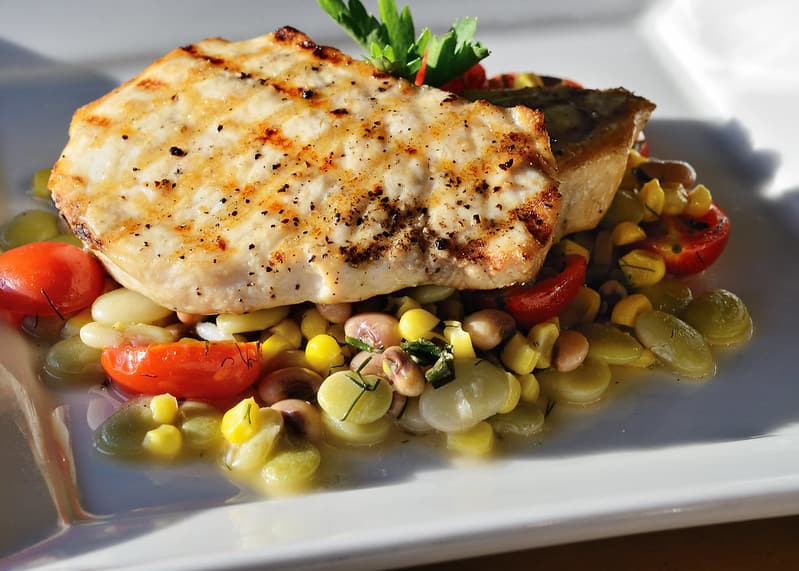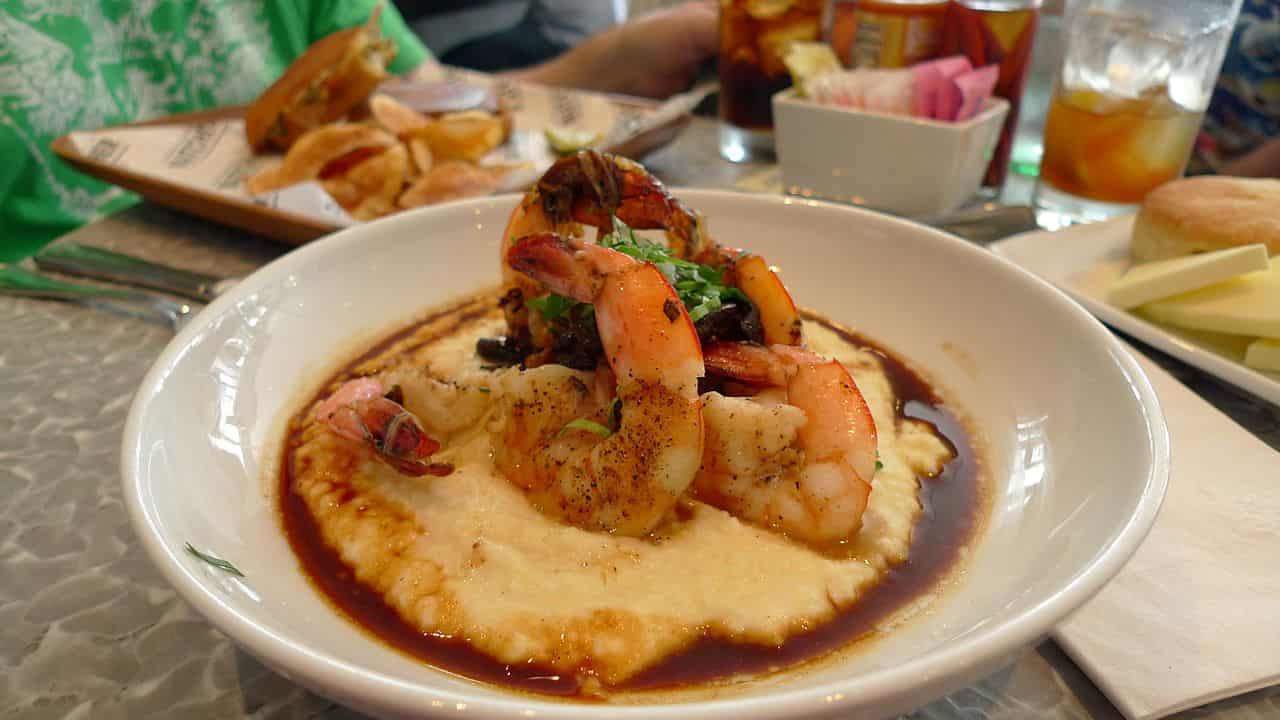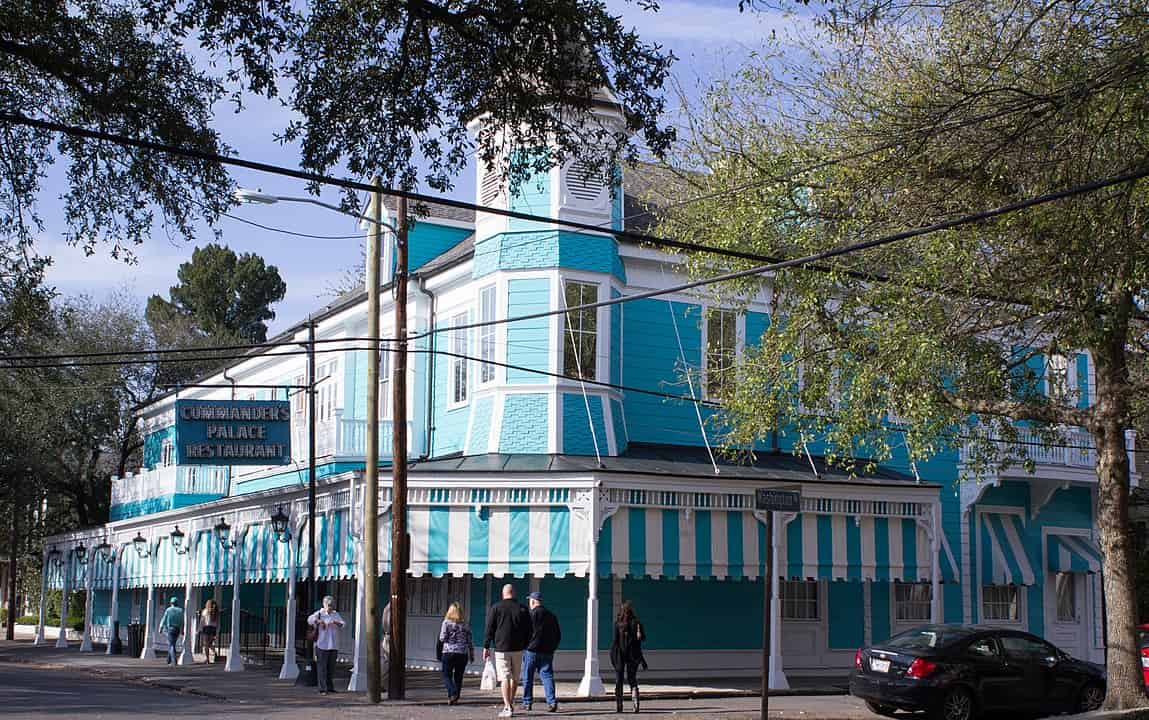This post covers the differences between Cajun and Creole foods and where you can find restaurants in New Orleans that specialize in either style or both.
Louisiana is the birthplace of two of the world’s most unique and sought-after cuisines, Cajun and Creole.
While these two cuisines are often confused and linked together as one, they are actually two distinct cuisines, formed by immigrants to a land with unique bounty and unique challenges.
Simply put, Creole cuisine is city food, the food of the people of New Orleans. Cajun cuisine is rural food.
The food that developed in the Louisiana Colony consisted of ingredients that were new to both the Creoles and Cajuns.
The natural bounty of the Mississippi delta provided the settlers of Louisiana with ingredients and inspiration.
Many of the ingredients and flavors are similar in both styles, with complexity and presentation being major differences.
Both cuisines borrow from the native diet: filé, a native herb made from sassafras; corn and hominy used for making grits; crawfish; local or farmed wild game, seafood, and fowl.
These are all elements borrowed from the region's Native American tribes.
Outside influence, access to ports of trade, the degree of wealth, and the burden of labor combine to further influence the differences between these two indigenous Louisiana cuisines.
Cajun and Creole dishes draw from the richness of the Mississippi Delta seafood and wildlife, reflect the different needs of city dwellers and farmers, and provide a unique look at how space, place, and diversity determine what we eat.
CAJUN FOOD RESTAURANTS IN NEW ORLEANS
To be Cajun is to have descended from the families of the original Acadians, Canadians of French descent who immigrated to the region from Nova Scotia, Canada after being expelled by the British following the Seven Years' War.
In 1768, the Spanish government of Louisiana agreed to take in a fleet of Acadian refugees and allowed them to farm the lower wetland regions of the Louisiana colony.
The name Cajun is an Americanization of the word Acadian. The Cajuns settled in the more southern central part of Louisiana where Houma, Thibodeaux, and Lafayette City are today.
When the Cajuns arrived in the area, they had to adjust to the unknown swamps, bayous, and prairies and forms of meat, game, fish, produce, and grains that were exotic to them.
Cajuns were much less wealthy than the Creoles of New Orleans. They settled within the swamps, and along the bayous, marshes, and prairies.
Cajun communities were largely isolated from the surrounding communities and without modern conveniences.
Cajun communities did not have ports or restaurants, and most of what you ate you had to catch or grow yourself.
This labor-intensive life led to one-pot dishes, slow-braised meats and stews, and ingredients that took advantage of the natural bounty of Louisiana.
Cajun food does not incorporate tomatoes. Much has been made of this distinction by the Cajun people. It remains one of the few factors that distinguish Cajun forms of gumbo, jambalaya, and étouffée.
Cajun cuisine is soul food, and comfort food. It reflects influences from Africa, France, and the Native American Indians.
Because of the popularity of “blackening” food and using cayenne pepper, many assume all cajun cuisine is spicy, which is not the case.
Spice or heat is an important element of the style, but not the only one.
When spiced in a traditional Cajun manner, many dishes are complex and the heat accentuates the natural flavor of the ingredients.
True Cajun food is harder to find in New Orleans than Creole food, but don’t worry, our guides know all the best Cajun restaurants in and around town.
Here are a few of our favorites:
Bon Tons Cafe ($$) - closed as of March 2024
Bon Tons Cafe, located at 401 Magazine Street in the Central Business District (map) has been serving Cajun-style food since 1953.
Featuring brick walls, checkered tablecloths, and warm Louisiana hospitality, Bon Ton serves only the freshest Louisiana seafood, Cajun style.

You don’t want to miss one of their Grilled Gulf Fish topped with grilled Louisiana oysters or shrimp.
Another sure bet is their Crawfish Étouffée, a classic Cajun dish with a medium roux, onions, peppers, celery, butter, and of course crawfish.
Bon Ton Cafe is closed on weekends. It is open Monday - Friday for lunch and dinner. http://www.thebontoncafe.com/
Cochon ($$)
Cochon is located at 930 Tchoupitoulas St, within walking distance from the National World War II Museum (map).
Cajuns love pork, and no one has captured the spirit of that love more than Donald Link’s Cochon. The restaurant sources locally raised pork, produce, and seafood.

Cochon is known for its high-quality pork dishes, so definitely try their Boucherie Plate and the Louisiana Cochon with cabbage and turnips.
If you are not a pork eater, Cochon has plenty of fish dishes to choose from. Try the Catfish Courtbouillon, a classic Cajun stew, and the Oven Roasted Gulf Fish.
Other can’t-miss dishes at Cochon: Rabbit & Dumplings, Fried Boudin with Pickled Peppers, and Shrimp and Eggplant Dressing. https://cochonrestaurant.com/
Landry’s Seafood ($$)
Landry’s Seafood at 620 Decatur Street (map) serves up the very best Crawfish Étouffée in the French Quarter.

Offering amazing views of both Decatur Street and the Mississippi River, Landry’s offers some of the region's best dishes in a family-friendly and convenient location.
Try their Cajun-style shrimp and crab gumbo and one of their fried seafood platters.
Spahr’s Seafood Restaurant ($$)
Located at 3682 Hwy 90 E, Des Allemands, LA (map). If you have a car, it is well worth the 27 miles drive out of the city to nearby Des Allemands, LA.
A part of colonial Louisiana’s German Coast, Des Allemands provides some of the region's best catfish.

Spahr’s serves fresh Louisiana seafood and provides a truly authentic Cajun experience. Their seafood platters can be ordered fried or grilled, and they provide other light options for calorie-conscious diners.
Try their Seafood Platters, Gator Bites, and Crawfish Stew.
Toups Meatery
When you eat with the Toups family, it's an experience.
They've been in Louisiana for over 300 years, so they've developed an incredible relationship with the food and the land.
Inspired by these deep-rooted Louisiana family traditions, Isaac and Amanda opened Toups’ Meatery restaurant in the Spring of 2012 to share that unique eating experience with the food-loving people of New Orleans.
Toups is where the locals eat. You can access it by taking the Museums Streetcar on Canal Street.
Located at 845 N Carrollton Ave, New Orleans, LA 70119
CREOLE FOOD RESTAURANTS IN NEW ORLEANS
Creoles, on the other hand, were the first settlers born of European descent in the French colonies.
Creole literally meant “born in the colony”, and is drawn from the word Criollo, Spanish or Portuguese for “born in the colony”.
Without many women in the colonies’ early days, Native American and enslaved African women were often the first mothers of these settlers’ children. Creoles are often, but not always, descendants of mixed race.
The descendants of “les gens de couleur libre”, Free People of Color, with strong influences of both French, German, Spanish, and African culture, have helped shape the cultural and culinary landscape of New Orleans for 300 years.
Creole cuisine is the cuisine of New Orleans and takes in all of the influences of the people of Louisiana’s largest urban environment.
Creole food contains influences of the early Native, African, French, German, Italian, and most recently Vietnamese and Honduran settlers and immigrants.
Creole cuisine is a living cuisine, meaning it continues to absorb new influences and redefine itself.
The traditional dishes of the Creole people: red beans and rice, jambalaya, gumbo, and creole sauce dishes are still prepared and recipes perfected in the home.
Creole cuisine incorporates roux (flour and fat), the trinity (onion, celery, green bell pepper), pepper, cream, butter, and thanks to the city's Italian immigrants, the tomato.
The difference between the rouxs that were used is the first major difference between the two styles.
The Creoles had more dairy products to utilize and that is why their roux is made from butter and flour, which is the traditional way to make a roux. Cajuns would use animal fats or oils to create their rouxs.
One dish where the difference in rouxs is obvious is gumbo with Creole utilizing more tomatoes and Cajun Gumbo looking more like goulash or stew.
The divide in wealth was also seen in what was consumed by the families. The Creoles were able to purchase local seafood as well as poultry.
Their cooks were able to incorporate indigenous products as well.
You saw the experimentation of the local spices utilized by the Native Americans of the region as well as African influences coming from the Caribbean.
Thus more herbs were used in creating refined time-intensive soups, bisques, and delectable desserts.
From the mid-nineteenth century well into the twentieth century, dining for the Creoles in New Orleans has been largely influenced by the French, who brought the first modern restaurant to the city, Antoine’s in 1840.
New Orleans’s restaurateurs past and present, have had, perhaps, the greatest impact in driving the evolution of Creole Cuisine.
Jules Alciatore, Arnaud “Count” Casanave, Ella Brennan, Paul Prudhomme, and Emeril Lagasse have all contributed to the style and flavors of modern Creole Cuisine.
Our guides at Free Tours by Foot have each put together a list of their favorite New Orleans restaurants.
Take our tour, and receive your guide’s list as well as other tips on where to dine for the best Creole food. Here are a few suggestions:
Commander’s Palace ($$$)
Commander’s Palace at 1403 Washington Avenue (map), is a classic Creole fine dining restaurant in the Garden District.
Maintaining old-line traditions such as a strict dress code and impeccable personal service, Commander’s is the perfect choice for date night or a celebration.

We recommend their weekend Jazz Brunch on Saturday or Sunday, a tradition that began at Commanders in 1974.
Try the Turtle Soup and Pecan Roasted Gulf Fish, Commander’s Classics.
No meal at Commander’s Palace would be complete without their world-famous Bread Pudding Soufflé, a Louisiana twist on a French classic! https://www.commanderspalace.com/
Dooky Chase’s Restaurant ($$)
Dooky Chase’s Restaurant at 2301 Orleans Avenue (map), has been serving up Creole Soul food since 1941.
Headed by award-winning restauranteur and chef, Leah Chase, and located in the historic Tremé neighborhood, Dooky Chase’s Restaurant offers a daily buffet-style lunch where you are sure to find the best Red Beans and Rice in New Orleans and can order up a little creole gumbo on the side.

Their dinner menu features Leah’s famous Fried Chicken, Shrimp Clemenceau, and Shrimp Creole. http://www.dookychaserestaurant.com/
Maypop ($$)
Maypop at 611 O’Keefe Street (map) in the Central Business District sits on the edge of culinary innovation in New Orleans.
Maypop, or the purple passion fruit flower, grows in both Louisiana and Vietnam, and this is the central theme at Maypop Restaurant.
Following the Vietnam War in the 1970s, Louisiana became home to 15,000 Vietnamese. Today, reflections of their culinary contribution can be seen everywhere from Crawfish boils to PoBoys.
Maypop is a great example of how Creole Cuisine continues to take on new flavors and influences, and the food is delicious, making it one of our top picks. http://maypoprestaurant.com/
Coop’s Place ($$)
Coop’s Place at 1109 Decatur Street (map), in the French Quarter, is the perfect spot if you are looking for something casual and low-key.
This dive bar, located one block from the French Market, serves up the best Jambalaya in the Big Easy. This spicy creole-style jambalaya features tomatoes, rabbit, and smoked pork sausage.

Ordering Coop’s famous fried chicken comes with a side of Jambalaya - giving you two great Coop classics on one plate!
Try their marinated crab claws and classic Creole seafood gumbo with a dark roux, filé, and okra.
Coop’s is the perfect spot for those looking for a casual, authentic New Orleans experience. http://www.coopsplace.net/
Tableau
Tableau, located on Jackson Square at 616 St. Peter St. is Dicky Brennan's take on Creole Cuisine.
Their rotating menu and great balcony dining makes it a superb choice for tourists and locals alike who may be attending a production at the attached Le Petit Theatre.
Mother’s Restaurant ($)
Mother’s Restaurant at 401 Poydras Street (map) in the Central Business District, serves down-home Creole fare in a casual cafeteria-style environment.
The perfect spot for families, Mother’s menu has something for everyone at the best prices in New Orleans.
You’ll definitely want to try their famous Debris with Au Jus Gravy, a perfectly seasoned pot roast swimming in delicious gravy, with a side of red beans or braised turnip greens. you can also get the Debris on a po-boy!
Mother’s has daily plate lunch specials and their menu makes it easy to see which options are vegetarian and gluten-free, and also, dishes that contain pork. http://www.mothersrestaurant.net/
In recent years, the food of the Creoles of New Orleans and the Cajuns of the central and southwest have become synonymous in the minds of those who dream of and visit New Orleans.
While both cuisines are present in the city today, true and authentic Cajun dishes can be harder to find.
You’ll definitely want to take Free Tours by Foot Culinary & History Tour, with one of our local Cajun or Creole guides, to taste the difference, learn more about the history and culture of the Cajuns and Creoles, and learn our guides’ inside tips for the best dining in New Orleans!





